It’s official! The sheriff’s office lifted all posted evacuation warnings for the Hay Creek Fire, effective August 18, 2021 . . .
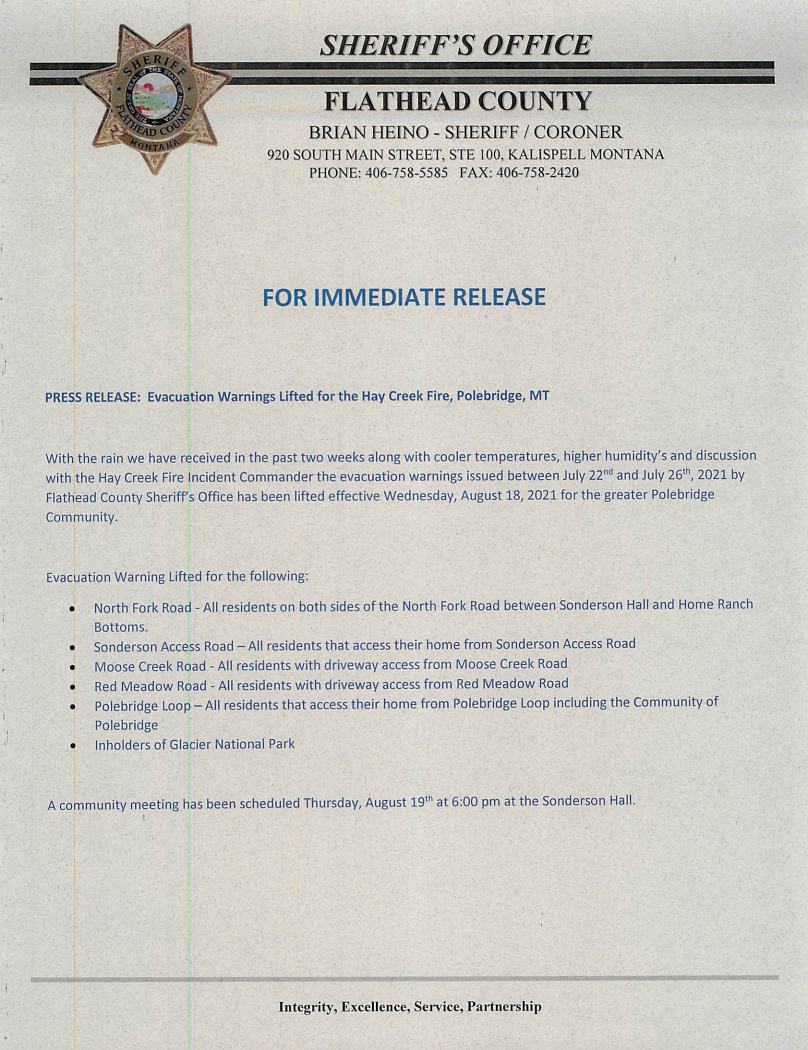
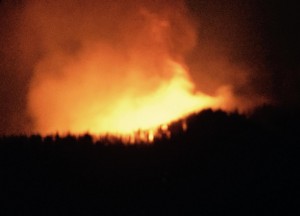
With fire season looming, the NFPA’s Wildfire Information page has been subjected to its annual housecleaning. As usual, there was some “link rot.” A few new resources were added and one or two eliminated that simply no longer existed.
Please feel free to report any problems with this page or to make suggestions for improvement.
NFPA President Debo Powers had this op-ed published in the Hungry Horse News recently…
I was too busy working as a volunteer fire lookout this summer to immediately respond to the outrageous and opportunistic comments made by Senator Daines, Congressman Gianforte, Secretary Zinke, and Secretary Perdue at the Lolo Fire. To use a time when many Montanans were evacuating their homes, firefighters were risking their lives, and all of us were tired of breathing smoke to start a “blame game” and push a political agenda was insensitive and unethical.
This has been one of the hottest, driest summers we’ve ever had and everything wanted to burn … whether it was grassland or former timber plots or old growth forest … everything wanted to burn. And given a spark, it did just that.
Land managers have been working diligently for a decade on thinning and fire mitigation projects on public lands that are adjacent to private land. These projects have been very helpful, but in a drought like this one, nothing will stop wildfire. Our leaders need to, not only be supportive of land management projects, but also be looking for solutions to the bigger, more complex, problem.
The fact is that our fire seasons are longer, drier, and hotter than ever before. Ninety-seven percent of our scientists say that this is the result of our over-consumption of fossil fuels which produce more greenhouse gases than the natural world can handle. The planet is getting hotter at a faster rate than can be explained by natural cycles. We are now seeing the results in horrific fire seasons. Rather than playing the unproductive “blame game,” real leaders should be working together, pushing for real solutions to address this complicated problem, like renewable energy and decreasing the use of fossil fuels.
Debo Powers
NPR’s “All Things Considered” did a segment on efforts by wildland firefighters to prevent their operations from spreading invasive species . . .
Wildland firefighters in the West are using precious time to clean equipment in order to avoid bringing invasive species into sensitive areas. It’s an attempt to avoid billions of dollars in damage.
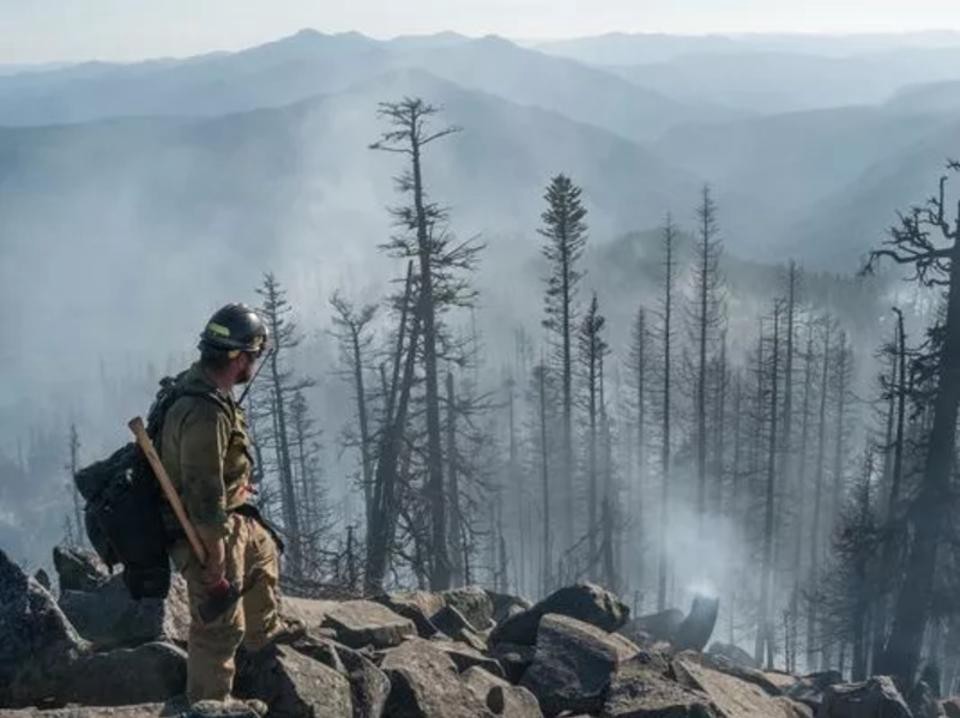
The tone is a little overwrought, but this article has some good points about the risks of large crowds gathering along the solar eclipse path during peak wildfire season . . .
At the peak of wildfire season, all it takes is one errant spark to start a blaze, potentially leading to wildfires engulfing thousands of acres. It isn’t just the fire itself that’s dangerous, but also the smoke, the degraded air quality, and the potential closures of roads. In Oregon, in particular, over a million people are expected to travel to the seventy-mile-wide path of totality, in the heart of the hottest, driest part of the year. The entire pacific northwest, including parts of Oregon, Idaho, and Wyoming, has active wildfires going right now, threatening the air, roads, and general safety of residents and tourists alike…
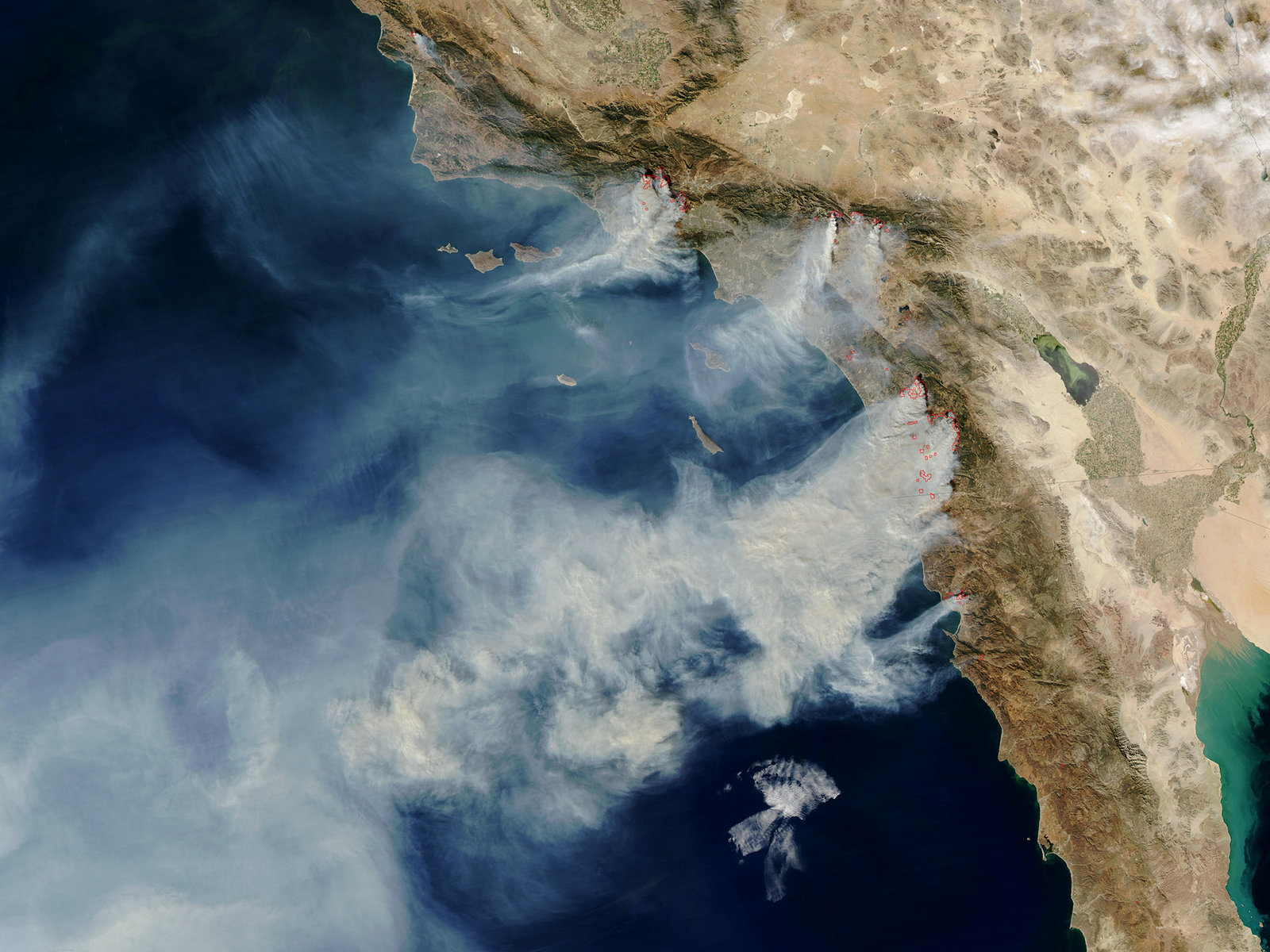
Nationwide, the latest research claims 84% of wildfires are human-caused . . .
Wildfires can start when lightning strikes or when someone fails to put out a campfire. New research shows that people start a lot more fires than lightning does — so much so that people are drastically altering wildfire in America.
Fire ecologist Melissa Forder says about 60 percent of fires in national parks are caused by humans: “intentionally set fires, buildings burning and spreading into the forest, smoking, equipment malfunctions and campfires.”
But the average for all forests is even higher. The latest research shows that nationwide, humans cause more than 8 in 10 — 84 percent.
Additional reading:
– Humans sparked 84 percent of US wildfires, increased fire season over two decades (Science Daily)
– Human-started wildfires expand the fire niche across the United States (original publication in PNAS)
Yet another factor to consider in sage grouse preservation efforts . . .
If increasingly destructive wildfires in the Great Basin can’t be stopped, the sage grouse population will be cut in half over the next three decades, scientists say.
A report released Thursday by the U.S. Geological Survey comes just ahead of a court-ordered Sept. 30 deadline faced by the U.S. Fish and Wildlife Service to decide whether sage grouse need protection under the Endangered Species Act. Experts say such a listing could damage Western states’ economies.
“The sagebrush steppe and sagebrush ecosystem are in trouble,” said Matt Brooks, a fire ecologist with the USGS and one of the report’s authors.

With enough wind, the Marston Fire could make a run toward the North Fork . . .
The Marston Fire burning north of Dickey Lake near Fortine gained an estimated 800 acres Friday, pushing northeast toward Whale and Trail Creeks in the North Fork of the Flathead River.
The growing fire on the Kootenai National Forest has led to closures of roads and trails on portions of the northern Glacier View Ranger District of Flathead National Forest.
Information officer Tom Rhodes said the fire was estimated at 5,500 acres and had advanced to about 2.5 miles southwest of Whale Lake by Friday night. Rhodes said it remains about 15 miles from any residential structures near the North Fork, but critical fire conditions today could push it farther along into the drainages as strong winds are forecast to pick up this afternoon and continue into the evening.
Here’s a pretty interesting article posted to the Flathead Beacon that looks back at the history of wildfires in Glacier National Park . . .
Wildfires have played a prominent role in transforming the landscape of Glacier National Park throughout its 105-year history.
The Reynolds Creek Fire serves as the latest reminder of that incendiary influence as it burns over 2,000 acres in the St. Mary area. It’s the largest fire in the park since 2006, when the Red Eagle Fire scorched 34,000 acres.
The barren landscape along Lake McDonald, remnants of the 2003 Roberts Fire, which burned 57,570 acres in one summer, is perhaps the most visible example of fire’s powerful force and lasting effect. The fire was one of six massive blazes that burned more than 136,000 acres of land in Glacier that year, more than 13 percent of the preserve’s 1 million acres.
“The 2003 season is the pinnacle,” said Dennis Divoky, fire ecologist for the park.
But the fires of 2003 are only one chapter in the park’s long history shaped by fire and ash.
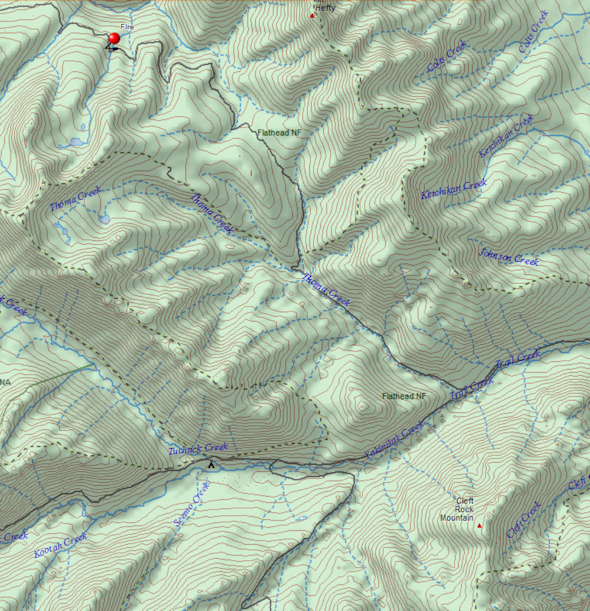
Fire crews are working a small (1/4 – 1/2 acres at last report) wildfire 2.4 miles west of Mt. Hefty, near Frozen Lake Road and close to the border. The Forest Service had crews and equipment on site by yesterday afternoon, with helicopters staging from Wurtz airstrip.